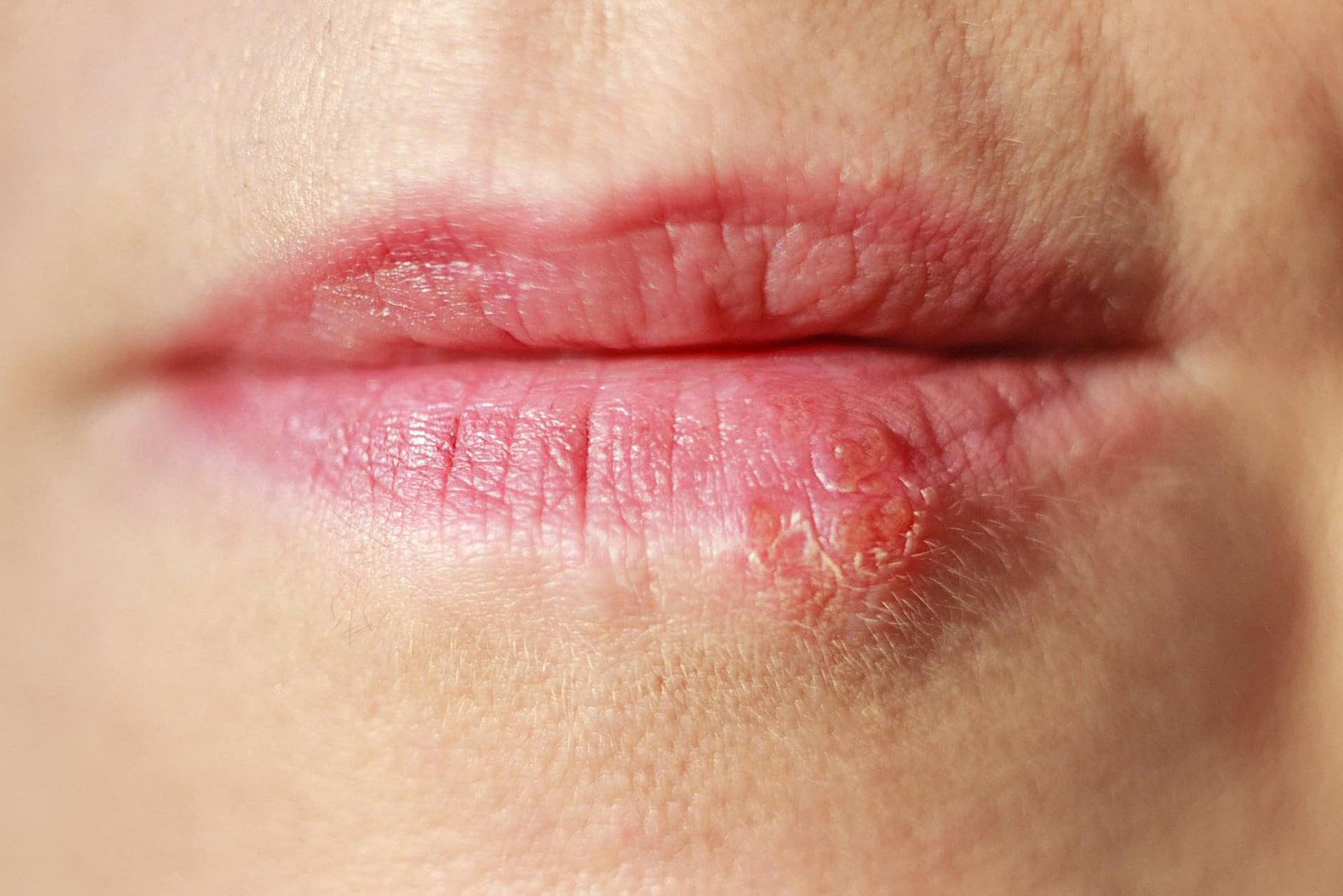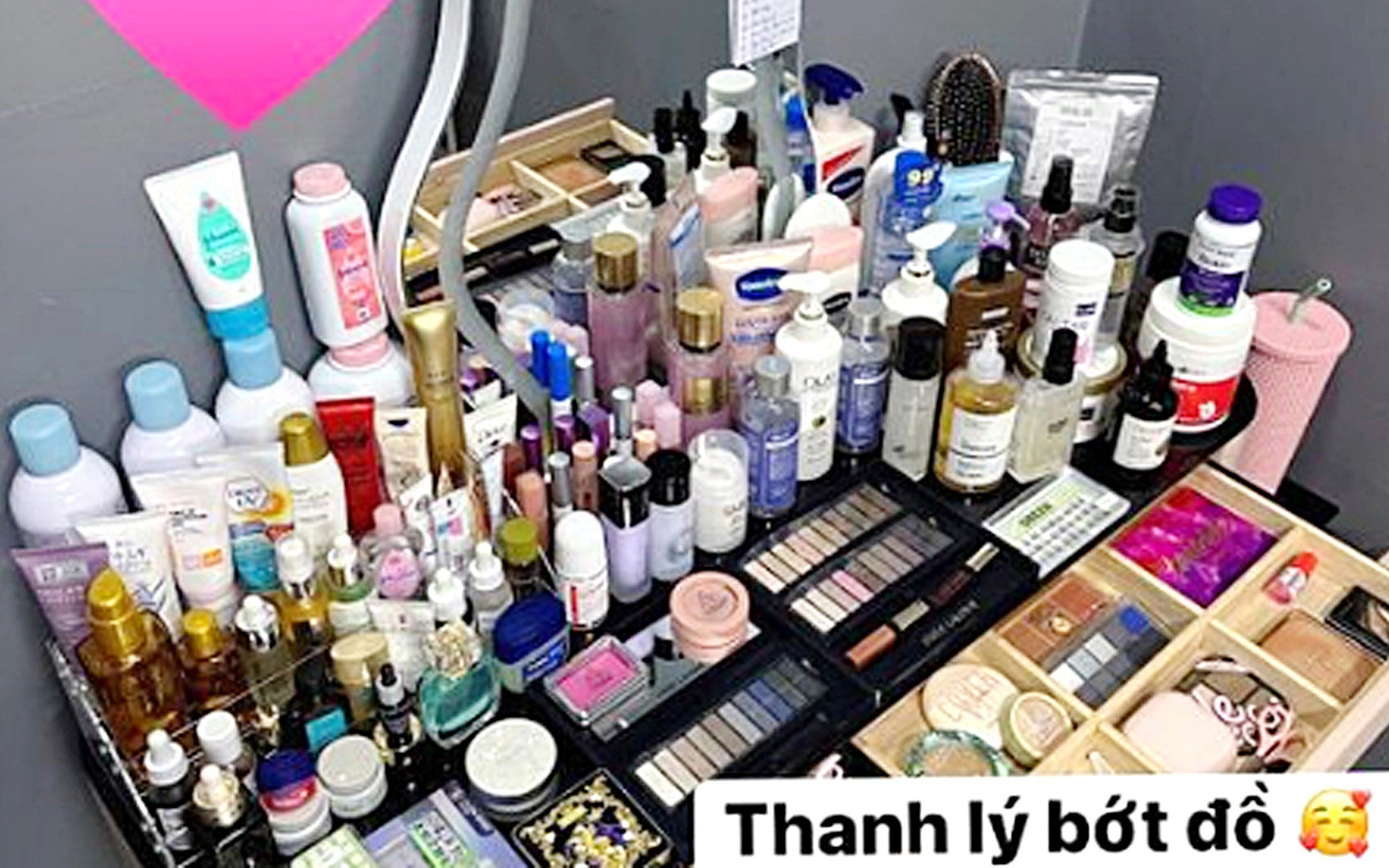Sharing cosmetics or secondhand cosmetics is one of the common mistakes among women. Especially after Tet, the cosmetics liquidation market becomes more bustling.

Liquidation cosmetics are often sold for reasons such as buying the wrong thing, not suitable for use... Depending on the condition of use, the seller will set different prices. Dermatologists warn of potential risks and skin damage when using these cosmetics.
After closing the deal and using used cosmetics sold on social networks, many women had to go to the hospital for "help" because their skin had many complications.
Dr. Phan Ngoc Huy, Department of Dermatology and Cosmetic Surgery at Ho Chi Minh City Dermatology Hospital, said the hospital has received many cases of unwanted complications after using used cosmetics sold on social networks.
Common complications of patients after using liquidated cosmetics are often allergic contact dermatitis with symptoms of peeling, redness, and itching. In severe cases, the skin can become inflamed and secrete fluid, which can easily lead to infection and create ugly scars. In addition, skin darkening after an allergic reaction is also quite common and requires treatment for an average of 3-6 months to fully recover.
PTV (21 years old, living in Quang Ninh) came to the doctor for help with red, peeling skin and burning pain. V. shared that he recently "hunted" for a set of famous brand skin care products that were 99% new at only 1/5 of the normal price, in a secondhand cosmetics liquidation group.
Hoping to improve her skin to be whiter and brighter, but after only one day of use, V. began to experience redness and stinging, causing discomfort. Immediately after that, the young girl contacted the seller and was told that the products were working and that she would have to use them for a few more days for the symptoms to disappear. After about three days of use, V. found that her skin was increasingly red, irritated, and felt a burning sensation in the area where the cosmetics were applied, while painful blisters appeared on her lips. At this time, V. went to see a doctor for a check-up.
Doctor Nguyen Tien Thanh, a member of the Vietnam Dermatology Association, who treated V., said that this was a case of contact dermatitis and herpes labialis due to using products of unknown origin. V. had to treat both contact dermatitis and herpes labialis at the same time with topical skin care, phototherapy, and oral antiviral drugs.

Dr. Phan Ngoc Huy said that using liquidated cosmetic products is becoming more and more popular in the beauty market, especially when consumers are tightening their spending in the current difficult economic times. Although this method can help buyers save a lot of money and sellers can liquidate unsuitable cosmetics, the risk will mostly be on the buyer's side.
There are three potential risks that you should consider carefully before using liquidated beauty cosmetics floating around on social networks.
Firstly, cosmetics are contaminated with bacteria, viruses, fungi and parasites. Cosmetics used directly on the skin of the previous owner such as lipstick, mascara, eyeliner, makeup puffs pose a high risk of infection. Especially if that person has conditions such as skin fungus, demodex dermatitis, infection with bacteria such as Pseudomonas aeruginosa, Staphylococcus aureus... Studies show that the rate of used cosmetics contaminated with bacteria is up to 79-90%.
Second, the product loses its potency. Cosmetics used for skin care need to be stored properly depending on the active ingredient, from factors such as light, temperature and humidity.
Typically, vitamin A derivatives such as retinol, tretinoin or vitamin C will easily lose their activity when exposed to direct light or high temperatures. Normally, buyers will not be able to know the true condition of cosmetics.
Third, buying fake goods. If you cannot check the origin of the product, you should really consider buying them because fake, poor quality goods are quite common in the market. Using fake cosmetics can seriously affect the health of the skin, because no one actually knows the ingredients and content of those cosmetics.
In addition, another small risk that you may also face is the issue of price. The price of the product is entirely up to the seller and the negotiation between the two parties. However, the exact amount of product left in the bottle cannot be measured accurately. Therefore, you may not be able to buy the product at a bargain price on the black market of cosmetics.
Doctor Nguyen Tien Thanh added that on the skin surface there may be viruses, bacteria, fungi that cause many skin diseases or in latent form (not yet causing disease). Therefore, when sharing cosmetic products, makeup tools or secondhand cosmetic products, there is a high risk of infection with viruses, bacteria, fungi that affect the skin.
In addition, makeup tools such as brushes and sponges are places that contain many chemicals, viruses, fungi, and bacteria that cause infections. In addition, lipstick is the same. Lips are a semi-mucosal area that is very vulnerable, with many risks of infectious diseases, herpes virus infection, and bacteria. It is best for women not to share cosmetics, makeup tools, and not to use liquidated products of unknown origin.
Doctor Phan Ngoc Huy recommends choosing cosmetics with clear origin, complete invoices and labels, and buying from reputable distributors. This is a prerequisite before evaluating the effectiveness of cosmetics.
Before using a new cosmetic, apply a small amount to the skin on the inside of the arm to check for allergic reactions such as rash, itching, peeling skin after 24 hours. Do not use too many cosmetics at the same time, especially when you start using a new cosmetic. Consult a dermatologist for full information before using an active ingredient or a cosmetic brand.
"Using cosmetics that are suitable for each individual's skin characteristics is the most important thing. Choosing a "branded product" is just one factor on the scale. Other equally important factors are active ingredients that are suitable for the skin, cosmetics that are easily accessible and you can use them for a long time without worrying too much about the cost," Dr. Huy advised.